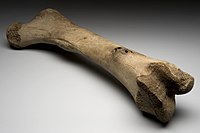
Feasibility and Safety of a Powered Exoskeleton for Assisted Walking for Persons With Multiple Sclerosis: A Single-Group Preliminary Study.
Sign Up to like & getrecommendations! Published in 2017 at "Archives of physical medicine and rehabilitation"
DOI: 10.1016/j.apmr.2017.02.010
Abstract: OBJECTIVE To examine the feasibility, safety, and secondary benefit potential of exoskeleton-assisted walking with one device for persons with multiple sclerosis (MS). DESIGN Single-group longitudinal preliminary study with 8-week baseline, 8-week intervention, and 4-week follow-up.… read more here.
Keywords: persons multiple; assisted walking; safety; feasibility safety ... See more keywords

Evaluation of Muscle Synergy During Exoskeleton-Assisted Walking in Persons With Multiple Sclerosis
Sign Up to like & getrecommendations! Published in 2022 at "IEEE Transactions on Biomedical Engineering"
DOI: 10.1109/tbme.2022.3166705
Abstract: Objective: Gait deficit after multiple sclerosis (MS) can be characterized by altered muscle activation patterns. There is preliminary evidence of improved walking with a lower limb exoskeleton in persons with MS. However, the effects of… read more here.
Keywords: muscle; assisted walking; exoskeleton; multiple sclerosis ... See more keywords

Effects of an exoskeleton-assisted walking program on bone strength in wheelchair individuals with spinal cord injury: A preliminary study using imaging and serum biomarkers
Sign Up to like & getrecommendations! Published in 2023 at "Physiology"
DOI: 10.1152/physiol.2023.38.s1.5796080
Abstract: BACKGROUND: Lower extremity weight bearing is a key determinant in maintaining bone density and strength. Approximately 60% of individuals with chronic spinal cord injury use a wheelchair long-term as their primary mode of locomotion—leading to… read more here.
Keywords: strength; bone; physiology; assisted walking ... See more keywords

Exoskeleton-Assisted Anthropomorphic Movement Training for the Upper Limb After Stroke: The EAMT Randomized Trial
Sign Up to like & getrecommendations! Published in 2023 at "Stroke"
DOI: 10.1161/strokeaha.122.041480
Abstract: Background: Robot-assisted arm training is generally delivered in the robot-like manner of planar or mechanical 3-dimensional movements. It remains unclear whether integrating upper extremity (UE) natural coordinated patterns into a robotic exoskeleton can improve outcomes.… read more here.
Keywords: anthropomorphic movement; movement training; exoskeleton assisted; assisted anthropomorphic ... See more keywords